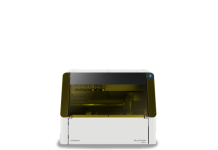According to Derek DeWitt, Communications Specialist at Visix, Inc. and writing for Digital Signage Today, evolving a visual medium into a dynamic experience brings an entirely new set of benefits. High-quality HD pictures that never fade over time entice potential customers, while small motion effects and videos capture their attention.
Digital screens do amazing things for all types of organisations, and quick service restaurants (QSRs) are no exception. QSR digital signage lets a single branch, or an entire network of locations, work smarter and more efficiently and scale the business during periods of growth.
And there’s something about digital signs that makes them memorable. As more people grow accustomed to getting their information though screens, that information seems more trustworthy to them. Some research has even shown that menu items on digital menu boards increase sales by up to 38%. That number will likely grow in the QSR sector in similar ways as retail shops, which have seen higher increases in sales by placing displays next to cashiers.
The ability to present dynamic content is one reason for this increase. Since the information on screen is flexible and can be changed in real time, the menu can suggest items that go with a customer’s choices. It’s an automated ‘would you like fries with that?’ but customised to each order.
Because the visuals are so appealing, it’s likely to draw attention even from passersby. To really grab them, consider an impressive video wall that can display large-scale images or many smaller ones, and which can be seen from a distance.
Brand Empowerment
Digital signage for QSRs also allows for greater brand differentiation. Not just the logo and colours the establishment uses, but the way people interact with the brand though the screens. An effective deployment makes for a more positive customer experience, allowing greater freedom of choice in the ordering process.
Interactive touchscreens and kiosks are now appearing with regularity inside QSR businesses. Self-ordering platforms free workers to spend more time with customers who prefer traditional counter service with human interaction. These platforms also allow QSRs to allocate more human resources to the drive-thru, which typically sees a more active level of customer traffic than indoor service.
Yet there are more interactive options available inside than just on-site screens. QR codes placed on tables can let people choose their seats first, access the menu by scanning the code with their smartphone, and even place their order before ever having to stand up. Adding a similar feature to the website extends things even further, letting customers browse and order before even getting to the store to pick up their food.
Digital signs offer better queue management because there simply aren’t as many queues. QSRs can also show which orders are being prepared and which are ready for pickup. Studies have shown time and again that having screens with compelling content on them immediately reduces perceived wait times by as much as 35%.
Digital menu boards can also offer lots of information, from sourcing information to nutritional stats to allergy guidelines, for compliance with food labeling laws. All of this is there for those who want it. All this info, and the entire menu, can be offered in multiple languages, accessible with a simple tap of an onscreen button. And there’s no limit to how many languages the establishment can add.
Obviously, digital signage for quick service restaurants is cleaner and more environmentally friendly than printing menus. Businesses save all of the related paper, ink and waste, and the system is much cheaper in the long run.
Since nothing’s printed on paper, changing things is easy. With good digital signage software, data can be updated manually in literally seconds, using any web-connected device. This means a branch manager could add a new special to the menu using their phone or laptop; they don’t even need to be physically present. The glass screens can be wiped down to prevent germ transmission, and enabling people to use their own devices adds another layer of personalisation, as well as protection against bacteria and viruses.
Cross-Platform Integration
The use of a cloud-based QSR digital signage system opens new opportunities for integration with other technologies, most notably the store’s point-of-sale system. This cross-platform integration means that inventory numbers are updated immediately, and no one gets disappointed when they order something only to find out that their choice is sold out. With basic scheduling tools, limited time offers can quickly and automatically appear and disappear from screens.
Messages can even be dayparted based on historical traffic flow data. For example, if a certain store finds that there’s an increase in sales of ice cream and milkshakes in warmer months around 3pm (when the school day ends), maybe a special offer can entice even more sales during this customer-led rush.
And while many QSR stores are part of larger chains, they’re still part of a community. In down times, or on idle screens, local events, news and weather can be displayed to entertain in-store diners. Should trouble come knocking, like a sudden storm, screens can all be overridden in an instant to display alert messaging.
Digital signage for quick service restaurants is the wave of the future, and with good reason. It gives customers more options and more ways to interact with your brand, reduces queuing times, and creates a positive, seamless customer experience. On the back end, digital signage is easier to use than physical menus, easily integrates with many systems via the web, makes inventory tracking simple, and increases the bottom line through efficiencies and increased sales.
This article appears in Digital Signage Today.















